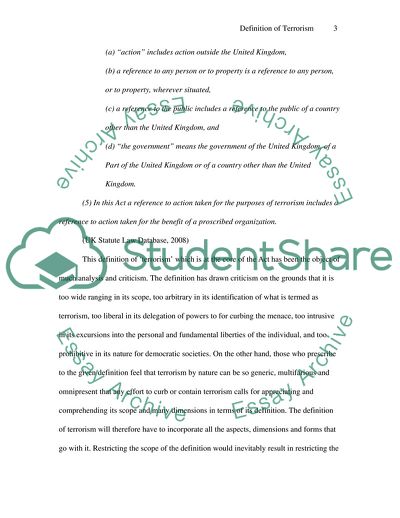Cite this document
(Analyzing the Definition of Terrorism in the Terrorism Act, 2000 Term Paper, n.d.)
Analyzing the Definition of Terrorism in the Terrorism Act, 2000 Term Paper. Retrieved from https://studentshare.org/social-science/1712588-critically-analyse-the-definition-of-terrorism-found-in-section-1-of-the-terrorism-act-2000
Analyzing the Definition of Terrorism in the Terrorism Act, 2000 Term Paper. Retrieved from https://studentshare.org/social-science/1712588-critically-analyse-the-definition-of-terrorism-found-in-section-1-of-the-terrorism-act-2000
(Analyzing the Definition of Terrorism in the Terrorism Act, 2000 Term Paper)
Analyzing the Definition of Terrorism in the Terrorism Act, 2000 Term Paper. https://studentshare.org/social-science/1712588-critically-analyse-the-definition-of-terrorism-found-in-section-1-of-the-terrorism-act-2000.
Analyzing the Definition of Terrorism in the Terrorism Act, 2000 Term Paper. https://studentshare.org/social-science/1712588-critically-analyse-the-definition-of-terrorism-found-in-section-1-of-the-terrorism-act-2000.
“Analyzing the Definition of Terrorism in the Terrorism Act, 2000 Term Paper”, n.d. https://studentshare.org/social-science/1712588-critically-analyse-the-definition-of-terrorism-found-in-section-1-of-the-terrorism-act-2000.


